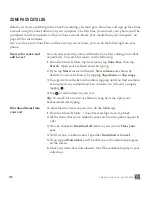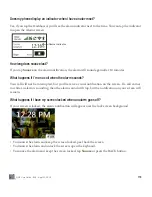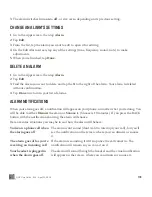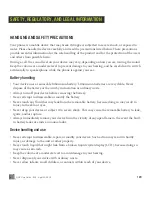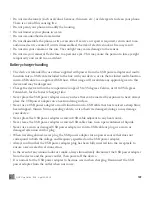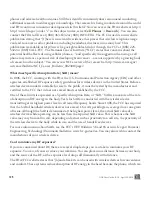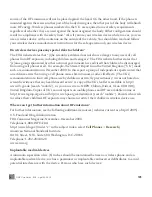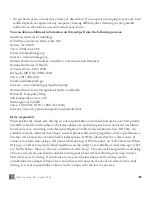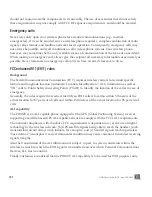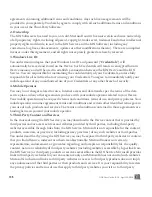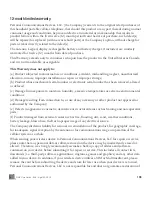
ONE User Guide - R1.0 - April 22, 2010
126
source of the RF emissions, will not be placed against the head. On the other hand, if the phone is
mounted against the waist or other part of the body during use, then that part of the body will absorb
more RF energy. Wireless phones marketed in the U.S. are required to meet safety requirements
regardless of whether they are used against the head or against the body. Either configuration should
result in compliance with the safety limit.” Also, if you use your wireless device while in a car, you can
use a wireless device with an antenna on the outside of the vehicle. You should also read and follow
your wireless device manufacturer’s instructions for the safe operation of your wireless device.
Do wireless devices pose any special risks to children?
The FDA website states that “[t]he scientific evidence does not show a danger to any users of cell
phones from RF exposure, including children and teenagers.” The FDA website further states that
“[s]ome groups sponsored by other national governments have advised that children be discouraged
from using cell phones at all. For example, the Stewart Report from the United Kingdom [“UK”] made
such a recommendation in December 2000. In this report a group of independent experts noted that
no evidence exists that using a cell phone causes brain tumors or other ill effects. [The UK’s]
recommendation to limit cell phone use by children was strictly precautionary; it was not based on
scientific evidence that any health hazard exists.” A copy of the UK’s leaflet is available at http://
www.dh.gov.uk (search “mobile”), or you can write to: NRPB, Chilton, Didcot, Oxon OX11 0RQ,
United Kingdom. Copies of UK’s annual reports on mobile phones and RF are available online at
http://www.iegmp.org.uk and http://www.hpa.org.uk/radiation/ (search “mobile”). Parents who wish
to reduce their children’s RF exposure may choose to restrict their children’s wireless device use.
Where can I get further information about RF emissions?
For further information, see the following additional resources (websites current as of April 2005).
U.S. Food and Drug Administration
FDA Consumer Magazine, November–December 2000
Telephone: 1-888-INFO-FDA
http://www.fda.gov (Under “c” in the subject index, select
Cell Phones
>
Research
.)
American National Standards Institute
1819 L Street, N.W., Suite 600, Washington, D.C. 20036
Telephone: 1-202-293-8020
www.ansi.org
Implantable medical devices
A minimum separation of six (6) inches should be maintained between a wireless phone and an
implantable medical device, such as a pacemaker or implantable cardioverter defibrillator, to avoid
potential interference with the device. Persons who have such devices:


